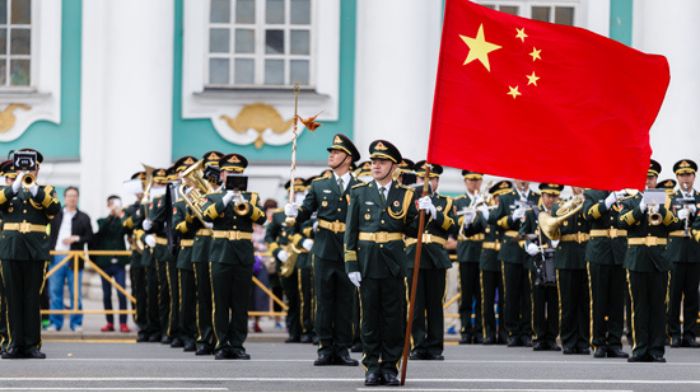The Russian invasion of Ukraine has brought the risk of China invading Taiwan front and center in most defense and national securing conversations.
It’s believed that China has been and continues to watch closely how the West reacts to the Russian invasion, perhaps taking notes for their possible future moves on Taiwan.
Some might push the narrative that America must defend Taiwan from invasion to keep China from military posturing in the Pacific that could infringe on American assets like Guam and Hawaii. And they wouldn’t be wrong.
Others might also argue that America must help free nations from invasion, which is debatable given our long-standing One China Policy.
I say that the real reason D.C. is sweating an invasion of Taiwan is less to do with our bases in the Pacific and the freedom of the Taiwanese and more to do with chips, and I’m not talking about the deliciously crunchy, salty kind.
“What if Xi does not want the Russia Ukraine war to end any time soon, because it is exhausting US and Nato’s weapons stockpiles, and that will make it even harder for the US to respond to a military move on Taiwan?” @niubi
Great question!
And we probably know the answer…
— Chris Fenton (@TheDragonFeeder) July 14, 2022
The Impact Of The Semiconductor
Semiconductor chips are found in everything from smartphones, cars, and advanced military weaponry. The semiconductor industry accounts for $555 billion in the global market and is the fourth most traded product in the world.
Support Conservative Voices!
Sign up to receive the latest political news, insight, and commentary delivered directly to your inbox.
Being the global leaders and foremost world power that we are, you’d think we would be one of the leaders in semiconductor manufacturing. But, unsurprisingly, we are not.
Schumer is moving ahead with a $52 billion bill to boost domestic semiconductor production to address the chip shortage, telling senators it could head to the floor as soon as Tuesday, per source. GOP leaders have been open to this
— Manu Raju (@mkraju) July 14, 2022
And this is how we get to what I believe is the underlying reason why China is the national security threat that so many want us to feel. One company on this planet produces a whopping 90% of the most advanced semiconductors. It is located in none other than Taiwan.
With China ramping up its rhetoric and military air maneuvers in the last two years into Taiwan’s Air Defense Zone, I think it’s fair to say we may have put way too many eggs – or chips, so to speak – in one basket.
RELATED: China v. U.S. War Game Highlights Disastrous Weaknesses In Our Military Might
Why Not Bring Semiconductors To The U.S.
Three decades ago, the U.S. market share of semiconductors was 37%; today, it is down to 12%. Then, the demand for semiconductors rose 17%; from 2019 to 2020, with the surge of military weaponry heading to Ukraine and the need to replenish depleted stockpiles, that demand is bound to continue increasing.
To be fair, bipartisan support has made it easier for the industry to set up its semiconductor factories here in the good old U.S. of A.
A bill allocating $52 billion to breathe life into the domestic semiconductor industry was drafted last year.
This bill would provide subsidies for these companies to operate within the United States. Some may argue that this is giving financial breaks for the fat cat technology industry, which isn’t incorrect. First, however, let’s take a look at the landscape.
How corporate welfare works
The semiconductor industry (Intel, etc) got $9.5 billion in taxpayer subsidies over 20 years. Then it offshored 150,000 jobs.
Last year it made $70 billion in profits. But it says it’s struggling. So the government is giving it a $50 billion bailout.
— Dan Price (@DanPriceSeattle) July 14, 2022
It costs roughly $10 billion to build a semiconductor factory. As it stands, a fair amount of countries, including South Korea, Japan, and India, cover 30% to 50% of that cost. That doesn’t even take into account China, which covers 70%.
To put it simply, CEO of Intel Pat Gelsinger broke it down like this:
“It is not economically viable for us to compete in the world market if everyone else that we’re competing with is seeing 30 to 50 percent lower cost structures.”
Unfortunately, like most things in D.C., the bill is stalled.
But think for a second – for the cost of what our government sent to Ukraine, we could have had six semiconductor plants.
What would be the cost of a war halfway around the world against China?
Estimates for the cost of the Iraq War vary widely, but the lowest figure seems to be $2 trillion.
You can do the math on how many semiconductor plants that could have built.
All Eyes On August
Members of industry and the Department of Commerce hope the stalled CHIP bill will get passed before Congress leaves for the August break. However, Commerce Secretary Gina Raimondo warned Congressional leaders:
“We are now in a very dangerous situation in which we are utterly reliant on Taiwan for the vast, vast majority of our most advanced semiconductors, which are the exact kind of semiconductors you need for military equipment.”
She’s not the only one trying to push on Congress to take action. Intel agreed to invest $20 billion in an Ohio-based facility for two chip factories employing 3,000 people. However, that project has had to be put on pause according to Intel spokesman William Moss:
“As we said in our January announcement, the scope and pace of our expansion in Ohio will depend heavily on funding from the CHIPS Act. Unfortunately, CHIPS Act funding has moved more slowly than we expected and we still don’t know when it will get done.”
McConnell just walked away from bipartisan legislation to compete with China on semiconductor chips because Democrats want to lower prescription drug costs. He is willing to let China win so that Democrats, and our country, lose.
— Chris Rilling???????????????????? (@tokitaeII) July 9, 2022
RELATED: Biden Goes Off Script To Commit America To Defend Taiwan In Military Conflict
Semiconductor Independence Should Go Hand-in-Hand With Energy Independence
If China were to invade Taiwan, they would have 90% of the semiconductor industry within their control. Besides the defense implications of this, there are real everyday concerns regarding this sort of control.
When there was a chip shortage during the pandemic American carmakers were forced to pull back and, in some cases, suspend production of vehicles. This saw a 37% price increase in used cars.
Spoke with Gov. @DougBurgum and Gov. @GlennYoungkin about the need for Congress to finally pass the CHIPs Act and address the global chip shortage. In Arizona, we’ve amped up skills training and created the right environment for semiconductor companies to take root. pic.twitter.com/ClBcHcsaXR
— Doug Ducey (@DougDucey) July 14, 2022
I don’t think China aims to get into a ‘hot war’ or military conflict with the West. But I think they seek to control as much as they can economically, and they have ramped up their military production and covert actions.
The cybersecurity implications of China taking over the most significant production of semiconductor chips is massive, given that these are the same chips that go into everything from our iPhones to our jet planes.
Perhaps There is Another Way To Push Back Chinese Aggression
President Biden made waves earlier this year when he replied ‘Yes’ to a reporter who asked him:
“You didn’t want to get involved in the Ukraine conflict militarily for obvious reasons. Are you willing to get involved militarily to defend Taiwan if it comes to that?”
When all signs indicate we would not fare well in a military battle with China, perhaps this rhetoric is ill-advised. However, finding ways to make it easier for the industry to produce these chips stateside could bolster national security and economic benefits for the country.
JUST IN: On Wednesday, Hakeem Jeffries @RepJeffries, chair of the House Democratic Caucus, said: “significant progress” had been made on a bill proposed to boost the U.S. semiconductor industry, and he believes it will be agreed upon by July. #US #Democrat pic.twitter.com/FpuEAQqICH
— BNN United States (@BNNUS) July 13, 2022
An additional five people are hired for every semiconductor worker to assist with supply activities. And with most jobs in this industry paying more than $100,000 a year, that’s a pretty nice boost for the American worker.
As Malcolm Kyeyune wrote in his column in Compact:
“As for Taiwan’s semiconductor manufacturing capacity, there is no law of nature dictating that chips should be made on a small, threatened island located in China’s linguistic and civilizational sphere.”
It’s time we build more baskets in the U.S. to put our chips in.
Now is the time to support and share the sources you trust.
The Political Insider ranks #3 on Feedspot’s “100 Best Political Blogs and Websites.”

























































